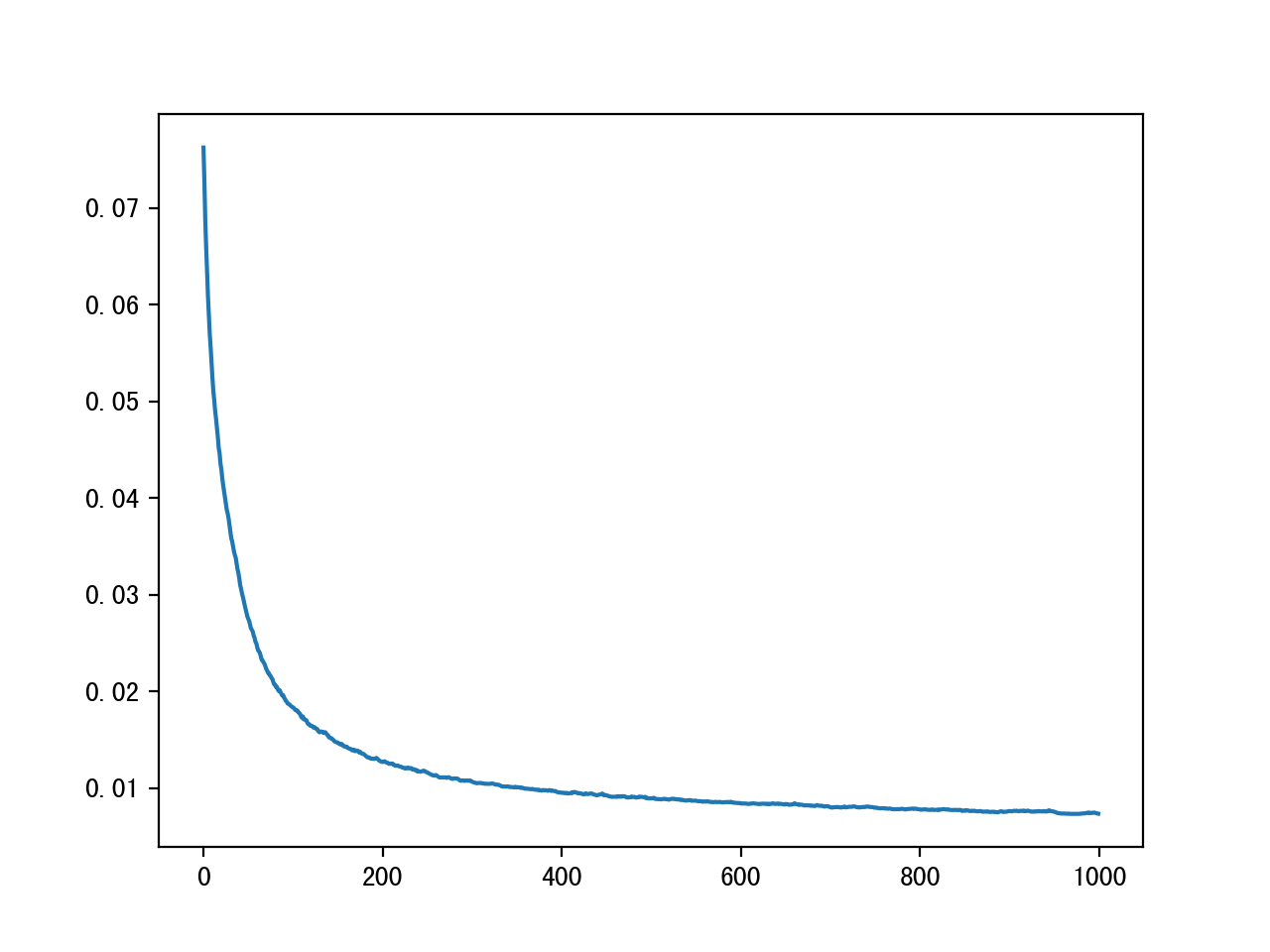溫馨提示×
您好,登錄后才能下訂單哦!
點擊 登錄注冊 即表示同意《億速云用戶服務條款》
您好,登錄后才能下訂單哦!
相對于自適應神經網絡、感知器,softmax巧妙低使用簡單的方法來實現多分類問題。
softmax的損失函數是采用了多分類問題中常見的交叉熵,注意經常有2個表達的形式
這兩個版本在求導過程有點不同,但是結果都是一樣的,同時損失表達的意思也是相同的,因為在第一種表達形式中,當y不是
正確分類時,y_right等于0,當y是正確分類時,y_right等于1。
下面基于mnist數據做了一個多分類的實驗,整體能達到85%的精度。
'''
softmax classifier for mnist
created on 2019.9.28
author: vince
'''
import math
import logging
import numpy
import random
import matplotlib.pyplot as plt
from tensorflow.contrib.learn.python.learn.datasets.mnist import read_data_sets
from sklearn.metrics import accuracy_score
def loss_max_right_class_prob(predictions, y):
return -predictions[numpy.argmax(y)];
def loss_cross_entropy(predictions, y):
return -numpy.dot(y, numpy.log(predictions));
'''
Softmax classifier
linear classifier
'''
class Softmax:
def __init__(self, iter_num = 100000, batch_size = 1):
self.__iter_num = iter_num;
self.__batch_size = batch_size;
def train(self, train_X, train_Y):
X = numpy.c_[train_X, numpy.ones(train_X.shape[0])];
Y = numpy.copy(train_Y);
self.L = [];
#initialize parameters
self.__weight = numpy.random.rand(X.shape[1], 10) * 2 - 1.0;
self.__step_len = 1e-3;
logging.info("weight:%s" % (self.__weight));
for iter_index in range(self.__iter_num):
if iter_index % 1000 == 0:
logging.info("-----iter:%s-----" % (iter_index));
if iter_index % 100 == 0:
l = 0;
for i in range(0, len(X), 100):
predictions = self.forward_pass(X[i]);
#l += loss_max_right_class_prob(predictions, Y[i]);
l += loss_cross_entropy(predictions, Y[i]);
l /= len(X);
self.L.append(l);
sample_index = random.randint(0, len(X) - 1);
logging.debug("-----select sample %s-----" % (sample_index));
z = numpy.dot(X[sample_index], self.__weight);
z = z - numpy.max(z);
predictions = numpy.exp(z) / numpy.sum(numpy.exp(z));
dw = self.__step_len * X[sample_index].reshape(-1, 1).dot((predictions - Y[sample_index]).reshape(1, -1));
# dw = self.__step_len * X[sample_index].reshape(-1, 1).dot(predictions.reshape(1, -1));
# dw[range(X.shape[1]), numpy.argmax(Y[sample_index])] -= X[sample_index] * self.__step_len;
self.__weight -= dw;
logging.debug("weight:%s" % (self.__weight));
logging.debug("loss:%s" % (l));
logging.info("weight:%s" % (self.__weight));
logging.info("L:%s" % (self.L));
def forward_pass(self, x):
net = numpy.dot(x, self.__weight);
net = net - numpy.max(net);
net = numpy.exp(net) / numpy.sum(numpy.exp(net));
return net;
def predict(self, x):
x = numpy.append(x, 1.0);
return self.forward_pass(x);
def main():
logging.basicConfig(level = logging.INFO,
format = '%(asctime)s %(filename)s[line:%(lineno)d] %(levelname)s %(message)s',
datefmt = '%a, %d %b %Y %H:%M:%S');
logging.info("trainning begin.");
mnist = read_data_sets('../data/MNIST',one_hot=True) # MNIST_data指的是存放數據的文件夾路徑,one_hot=True 為采用one_hot的編碼方式編碼標簽
#load data
train_X = mnist.train.images #訓練集樣本
validation_X = mnist.validation.images #驗證集樣本
test_X = mnist.test.images #測試集樣本
#labels
train_Y = mnist.train.labels #訓練集標簽
validation_Y = mnist.validation.labels #驗證集標簽
test_Y = mnist.test.labels #測試集標簽
classifier = Softmax();
classifier.train(train_X, train_Y);
logging.info("trainning end. predict begin.");
test_predict = numpy.array([]);
test_right = numpy.array([]);
for i in range(len(test_X)):
predict_label = numpy.argmax(classifier.predict(test_X[i]));
test_predict = numpy.append(test_predict, predict_label);
right_label = numpy.argmax(test_Y[i]);
test_right = numpy.append(test_right, right_label);
logging.info("right:%s, predict:%s" % (test_right, test_predict));
score = accuracy_score(test_right, test_predict);
logging.info("The accruacy score is: %s "% (str(score)));
plt.plot(classifier.L)
plt.show();
if __name__ == "__main__":
main();
損失函數收斂情況

Sun, 29 Sep 2019 18:08:08 softmax.py[line:104] INFO trainning end. predict begin. Sun, 29 Sep 2019 18:08:08 softmax.py[line:114] INFO right:[7. 2. 1. ... 4. 5. 6.], predict:[7. 2. 1. ... 4. 8. 6.] Sun, 29 Sep 2019 18:08:08 softmax.py[line:116] INFO The accruacy score is: 0.8486
以上就是本文的全部內容,希望對大家的學習有所幫助,也希望大家多多支持億速云。
免責聲明:本站發布的內容(圖片、視頻和文字)以原創、轉載和分享為主,文章觀點不代表本網站立場,如果涉及侵權請聯系站長郵箱:is@yisu.com進行舉報,并提供相關證據,一經查實,將立刻刪除涉嫌侵權內容。